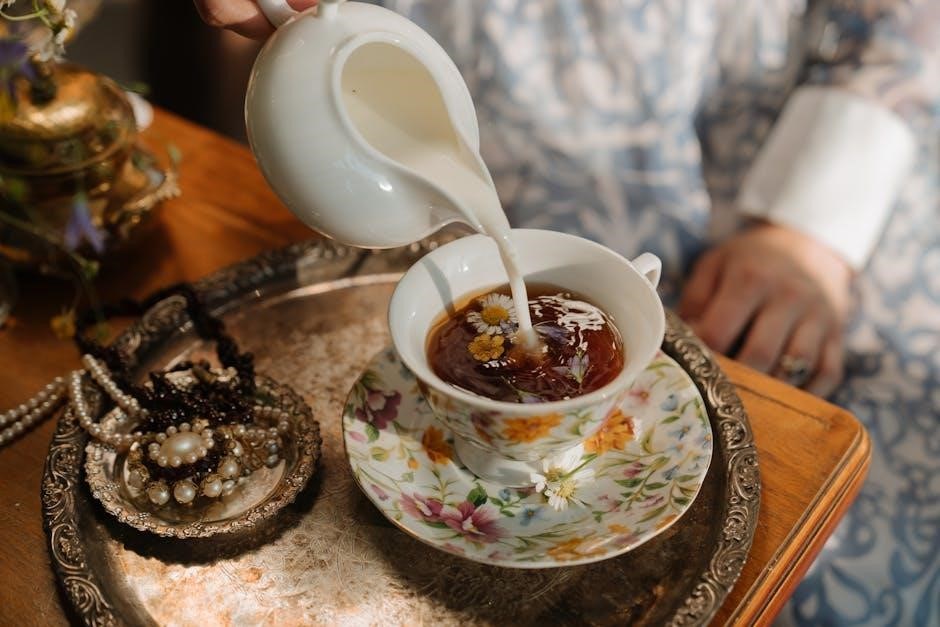
-
By:
- ida
- No comment
vintage and antique jewelry identification guide
Understanding the Timeline of Vintage and Antique Jewelry
Explore the evolution of jewelry through key historical periods, from Victorian romanticism to Art Deco modernism, each era reflecting unique craftsmanship and stylistic influences.
Identifying Key Eras: Victorian, Art Nouveau, Art Deco, Retro, and Mid-Century Modern
The Victorian era (1837–1901) is marked by intricate designs, mourning jewelry, and symbolic motifs like flowers and birds. Art Nouveau (1890–1910) features flowing, organic lines and nature-inspired themes. Art Deco (1920–1940) is characterized by geometric shapes, bold colors, and exotic influences. The Retro period (1940–1960) emphasizes large, colorful gemstones and statement pieces. Mid-Century Modern (1950–1970) highlights minimalist designs, clean lines, and functional craftsmanship. Each era reflects distinct aesthetic and cultural values, making understanding these periods crucial for identifying and dating vintage jewelry effectively.
Hallmarking and Signatures: Unlocking the Identity of a Piece
Hallmarks and signatures are crucial for identifying jewelry makers, locations, and eras. These hidden marks reveal a piece’s origins, authenticity, and historical significance, aiding collectors and enthusiasts alike.
How to Find and Interpret Hallmarks, Maker’s Marks, and Designer Signatures
Hallmarks, maker’s marks, and designer signatures are essential for identifying vintage and antique jewelry. These marks are often discreetly placed on the back, clasp, or inner band of a piece. Use a magnifying glass or jeweler’s loupe to locate them. Hallmarks typically indicate metal purity, such as “14K” for 14-karat gold or “750” for 18-karat gold. Maker’s marks can help attribute the piece to a specific designer or workshop. Designer signatures are often stylized initials or logos. Researching these marks in hallmark dictionaries or online databases can reveal the piece’s origin, era, and artist. This step is crucial for authenticating and valuing jewelry.
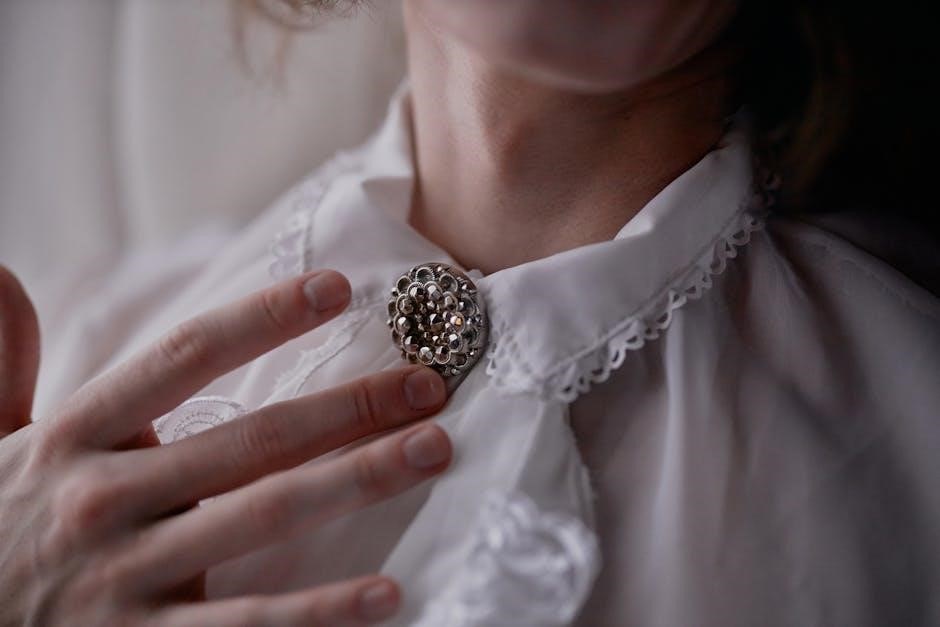
Materials and Techniques: A Closer Look
Identify precious metals like gold, silver, and platinum, and recognize gemstones such as diamonds, pearls, and sapphires. Techniques include filigree, enameling, and pavé settings, showcasing craftsmanship.
Recognizing Precious Metals, Gemstones, and Unique Craftsmanship Techniques
Identify precious metals such as gold, silver, and platinum by their hallmarks or patina. Gemstones like diamonds, pearls, and sapphires are valued for their clarity and luster. Craftsmanship techniques like filigree, enameling, and pavé settings showcase artisanal skill. Look for intricate details like bezel or prong settings, which secure stones. Hand-engraved patterns and milgrain textures are hallmarks of vintage pieces. Assessing the quality of these elements helps determine authenticity and value. Understanding these materials and techniques is crucial for distinguishing genuine vintage jewelry from reproductions, ensuring accurate identification and appreciation of timeless craftsmanship.
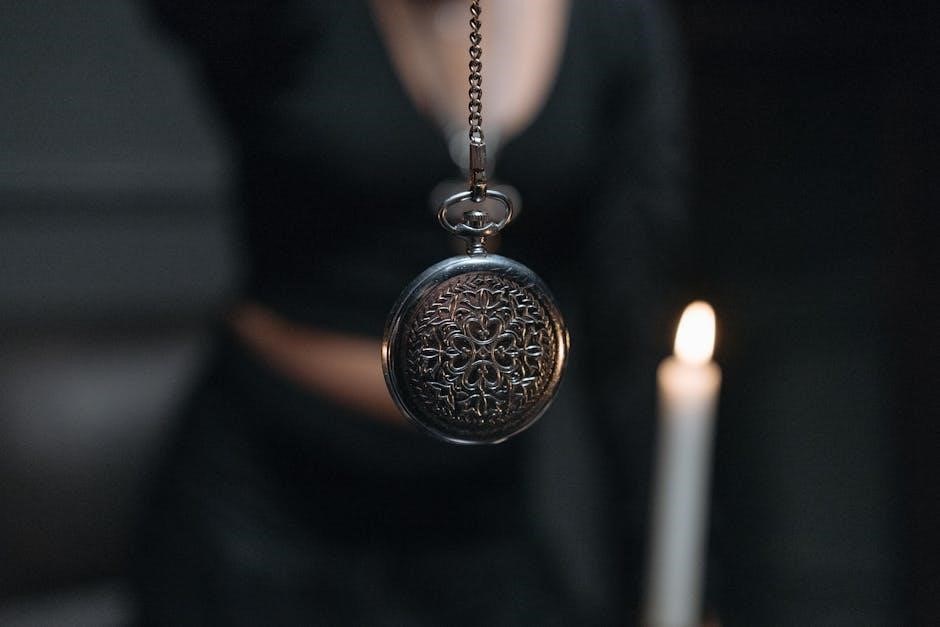
Condition Assessment: What to Look For
Evaluate wear, repairs, and patina to determine authenticity and value. Inspect for signs of aging, damage, or alterations that impact the piece’s integrity and historical significance.
Evaluating Wear, Repairs, and Patina to Determine Authenticity and Value
Assessing the condition of vintage and antique jewelry involves examining wear, repairs, and patina. Wear indicates age and usage, with scratches, dents, or polished areas signaling authenticity. Repairs, if present, should be evaluated for professionalism and whether they compromise the piece’s integrity. Patina, a natural aging process, adds character but must be distinguished from damage. Inspect for consistent aging patterns and avoid pieces with excessive restoration. Use magnification tools to spot details like soldering or enamel flaws. Comparing with similar pieces can help gauge authenticity. A thorough condition assessment is crucial for determining both the historical value and monetary worth of the jewelry.
Provenance and Documentation: Adding Value to Your Find
Provenance and documentation significantly enhance the value of vintage and antique jewelry by providing historical context and authenticity, making each piece uniquely valuable to collectors.
Understanding the Importance of Historical Ownership and Paperwork
Historical ownership and paperwork are crucial in verifying the authenticity and value of vintage and antique jewelry. Provenance, or the history of ownership, adds credibility and can significantly increase a piece’s worth. Documentation, such as receipts, appraisals, and certificates of authenticity, provides a trail of evidence. This paperwork often includes details about the materials, craftsmanship, and origins of the piece. Additionally, historical records can reveal a piece’s connection to notable events, designers, or families, enhancing its emotional and monetary value. Preserving such documentation ensures the jewelry’s legacy and aids in insurance, inheritance, and future sales. It is essential to verify and maintain these records to uphold the item’s integrity and value over time.
Reverse Image Search: A Modern Tool for Identification
Reverse image search helps identify vintage jewelry by finding similar pieces online, aiding in authentication and value estimation. Use platforms like Google Images or Bing Image Match.
Using Online Platforms to Find Similar Pieces and Verify Authenticity
Online platforms like Google Images, eBay, and Etsy are invaluable for identifying vintage jewelry. Upload high-quality images to reverse image search tools to find similar pieces. Use filters to narrow results by size, color, and era. Compare designs, materials, and hallmarks to verify authenticity. Check seller reviews and item descriptions for credibility. Platforms like Ruby Lane and 1stdibs specialize in antique and vintage items, offering a trusted marketplace for research. By leveraging these tools, you can uncover the history, value, and authenticity of your jewelry, making informed decisions for purchases or appraisals. This modern approach streamlines the identification process, saving time and effort.
Evaluating Market Value: What’s It Worth?
Rarity, condition, provenance, and demand significantly influence the market value of vintage and antique jewelry. These factors, along with historical significance, determine its value in the market.
Factors Influencing the Value of Vintage and Antique Jewelry
The value of vintage and antique jewelry is shaped by several key factors. Rarity plays a significant role, with limited-edition pieces or those from notable designers commanding higher prices. Condition is equally important; flawless, unrestored items retain greater value than those with wear or repairs. Provenance, or ownership history, can elevate worth, especially if tied to historical figures or events. Demand also influences value, as trends in collectibility and market desire fluctuate. Additionally, the quality of materials, craftsmanship, and unique design elements further impact the appraisal. Understanding these factors helps in accurately assessing and determining the market value of a piece.
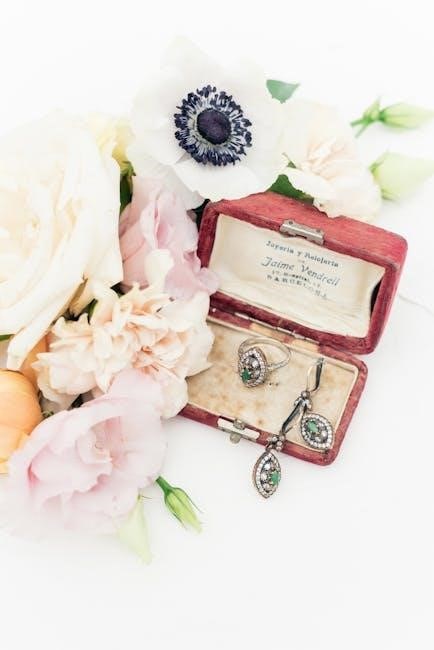
Common Mistakes to Avoid in Jewelry Identification
Overlooking hallmarks, rushing the identification process, and ignoring historical context are common pitfalls. Ensure thorough research and avoid assumptions based on appearance alone.
Pitfalls to Watch Out for When Assessing Vintage and Antique Pieces
When assessing vintage and antique jewelry, avoid common pitfalls such as overlooking hallmarks, rushing the identification process, and ignoring historical context. Misidentifying materials, like confusing silver for platinum, can lead to inaccurate valuations. Overreliance on unverified online sources or assuming a piece’s age based on appearance alone are additional mistakes. Neglecting to examine for repairs, alterations, or reproductions can also mislead. Trusting unverified sellers or lacking documentation can further complicate authenticity. Lastly, failing to consult experts or overestimating a piece’s rarity can result in misjudging its value. Thorough research and careful examination are essential to avoid these errors.
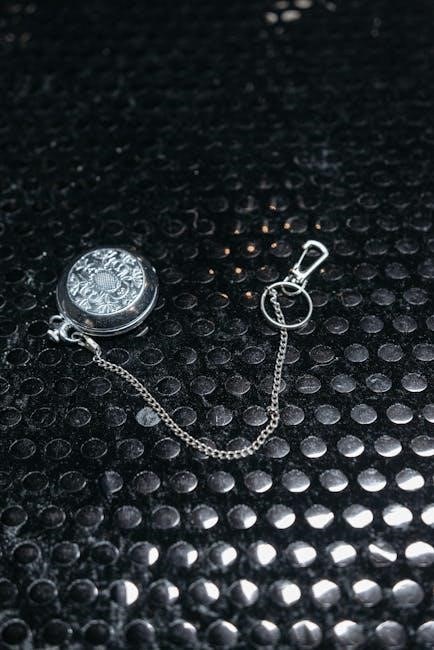
Step-by-Step Guide to Identification
Examine hallmarks, research historical context, analyze materials, compare with similar pieces, and verify authenticity to systematically identify vintage and antique jewelry with precision and confidence.
A Practical Approach to Authenticating and Evaluating Vintage Jewelry
A thorough authentication begins with examining hallmarks and signatures, which often reveal the maker and era. Next, inspect the materials, ensuring they align with historical practices. Analyze craftsmanship, such as prong settings or enameling techniques, to gauge age and quality. Compare the piece to documented examples using reference books or online databases. Consider consulting experts or appraisers for complex cases. Finally, evaluate the jewelry’s condition, noting any repairs or wear that might affect its value. This systematic approach ensures accurate authentication and evaluation, essential for collectors and enthusiasts alike.

Caring for Your Vintage Jewelry: Preservation Tips
Use mild soap and water for cleaning, avoid harsh chemicals, and store pieces in soft, dry materials. Avoid direct sunlight to preserve patina and prevent fading.
Best Practices for Cleaning, Storing, and Maintaining Timeless Treasures
Always clean vintage jewelry gently with mild soap and warm water. Avoid harsh chemicals or ultrasonic cleaners, which can damage delicate materials. Store each piece individually in a soft, lined box or pouch to prevent scratching. Never expose jewelry to direct sunlight for extended periods, as it can fade gemstones. For intricate designs, use a soft-bristle toothbrush to remove dust. Apply a jewelry-specific polishing cloth for metals, but never over-polish, as this can wear away historical patina. Regularly inspect for loose stones or worn prongs and have them repaired by a professional. Proper care ensures your treasures remain timeless and cherished.
Identifying and appreciating vintage and antique jewelry is a rewarding journey that combines history, craftsmanship, and passion. Each piece tells a story, reflecting the era in which it was created. By understanding timelines, hallmarks, materials, and care practices, collectors can authenticate and preserve these treasures. Embrace the process of discovery, whether through research, expert consultations, or hands-on examination. Building a meaningful collection requires patience and dedication, but the joy of owning a piece of history makes the effort worthwhile. Continuously learn, grow, and cherish the timeless beauty of vintage and antique jewelry, ensuring its legacy endures for future generations.